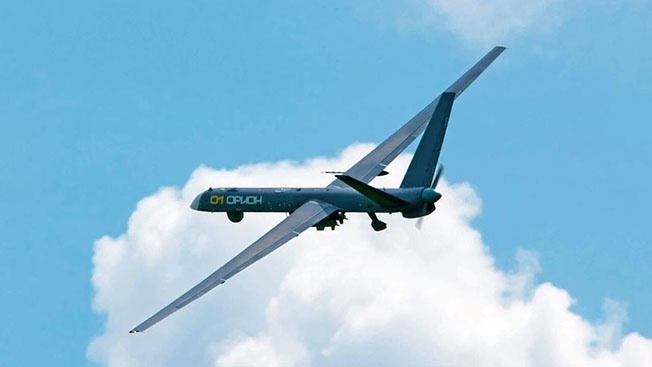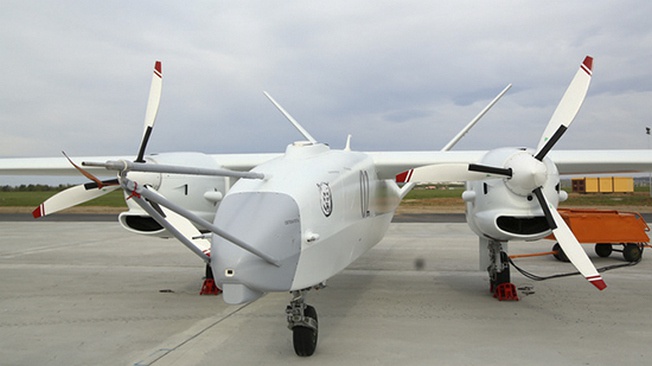Throughout 2019, the Russian Armed Forces have received some interesting “gadgets” added to their arsenal, with some yet to be added in the following months. These include unmanned ground vehicles (UGV), unmanned aerial vehicles (UAV) and lasers, among other systems.
Russia recently shifted its focus towards development of an unmanned space vehicles, similar to the US’ Orbital Test Vehicle – the Boeing X-37.
In 2022 in Russia, along with tests of the domestic reusable launch vehicle, tests of the first elements of a new aerospace aircraft should begin, Roscosmos received a patent for the development of engines the aerospace craft at the end of 2019.
There were statements in a number of media that the aerospace craft could become part of the so-called “Air Launch” system, the creation of which was officially abandoned back in the early 2000s.
Such an aerospace craft would be useful in monitoring Russia’s orbital group, for example. In addition, the creation of an aerospace craft can significantly extend the life of satellites and will allow small artificial satellites weighing from 10 to 150 kilograms to be launched into orbit at minimal cost.
The development of unmanned aerial vehicles is another area of large investment by Russian Defense Ministry. Research and development work on several unmanned systems at once has been completed. And one of the key successes is the beginning of the trial operation of the Orion drones.
The Orion is the first UAV in Russia, which, in terms of characteristics and equipment is on a par with the American Reaper and Predator UAVs.
Several Orion drones have, so far, been used in the Russian operation in Syria, both for reconnaissance as well as for strikes, as it can carry up to four guided missiles.
The Altius-U drone also began its flight tests, its reported maximum range will be 10,000 kilometers in one charge. There is no official information about the combat configurations of the drone, but some sources claim that in 2020 the Russian Ministry of Defense will show the final version of the drone, and several versions of the UAV will enter mass production in 2021.
The S-70 Okhotnik combat drone also performed its first flight tests recently. The tests included a fifth generation Su-57 fighter jet, which was used as a flying command post, used to issue orders to the UAV.
Finally, the loitering weapon – the Kalashnikov Concern’s Lancet UAV is also in high demand and it has successfully been tested and there’s even foreign interest for its procurement.
In terms of UGV, there’s a few notable mentions:
It is yet too early to develop entirely autonomous ground robots. However, it is known that fully robotic combat-ready formations are created by Russian specialists as part of the development of the Marker combat robotic platform. And the “philosophy” of using combat robots on the battlefield will be worked out as part of the creation of new armored vehicles for the Ground Forces.
The first concrete decisions in this direction are planned to be shown to the leadership of the Ministry of Defense of Russia by 2025, and by the end of the State Arms Program of 2027, the developers are planning to get the first prototype up for demonstrations.
And although the “Marker”, developed by the NPO Android Technique, is still a highly mobile miniature unit, the key features of the system are its software and hardware modules.
The Kungas is another unmanned ground vehicle, which could potentially be made fully autonomous. It is currently undergoing tests, and it is reportedly only used to delivery equipment to troops, but it could potentially be armed with weapons.
The test version of the Kungas, used for tactical link management, according to sources in the defense industry will be created by the Sozvezdie concern between 2022 and 2023.
Finally, the Peresvet laser reportedly entered combat duty on December 1st, 2018. There are currently efforts to promote the idea of mounting laser systems on warships and warplanes. At the same time, reportedly the technical restrictions on the use of Peresvet laser systems on the ships of the Russian Navy are now virtually eliminated.
It comes down to speculation, but it is not unlikely that a combat laser with a power of at least 100 kW may appear on warships in the next 5 years.
MORE ON THE TOPIC:









Russia: “What? Please come again.. Sorry I can’t hear you over my busy making changes while in the same time helping my friends who are being attacked by cia-made terrorists and making new weapons to stop the alliance of evil forces from the west!”
Russia had the first UAV space vehicle..the Buran!
Nice but-… Keep an eye in civil development too.
Lol! The US Military had such weapons and drones in the 80’s, seems the Russkies have years more to go until they can ever get close to catching up with America :-]